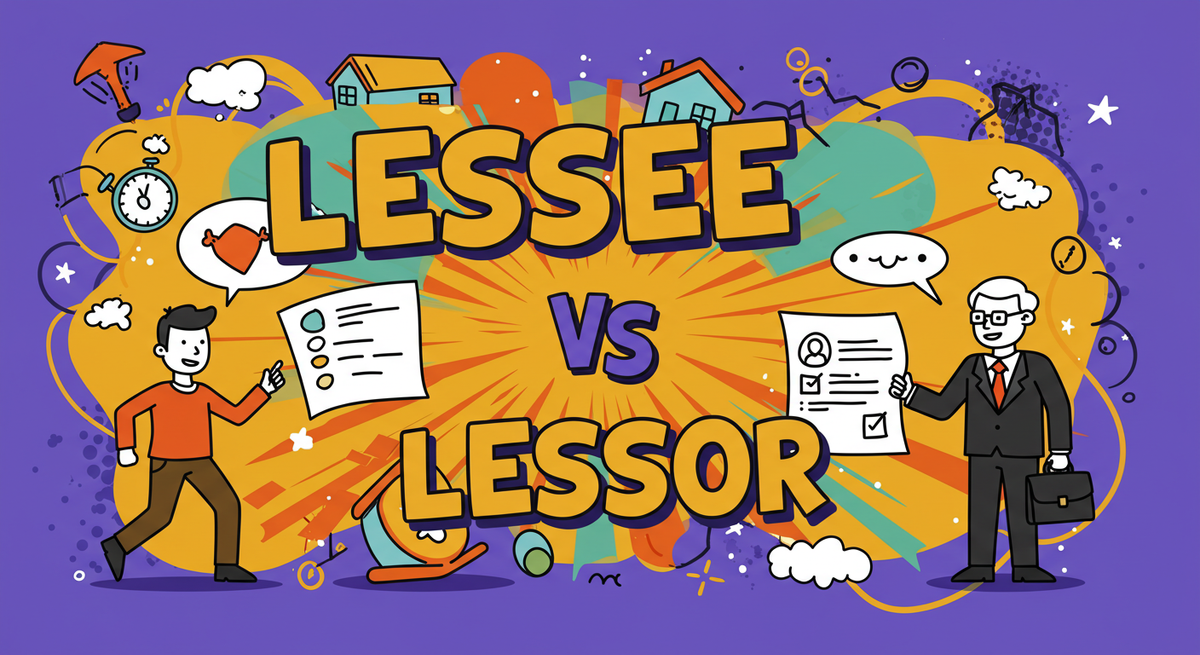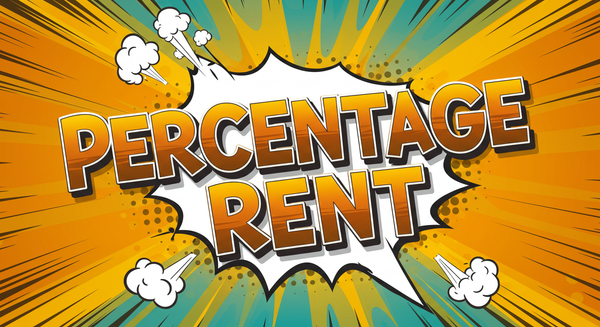Lessee vs Lessor in Property Management: A Complete Guide
A lessee is the person or business that rents property, while a lessor is the property owner or entity leasing out the space

A lessee is the person or business that rents property, while a lessor is the property owner or entity leasing out the space. In simpler terms, the lessee pays to use the space, and the lessor owns it and collects rent.
Understanding the lessee vs lessor relationship is essential for property managers and landlords because it shapes everything from lease agreements and tenant responsibilities to financial reporting and legal risk. Whether you manage residential or commercial property, getting this foundational dynamic right can make or break your operations.
In this guide, you'll learn what the lessee-lessor relationship really means, how it applies in practice, the legal obligations involved, and best practices to protect your property and your profit.
What Is Lessee vs Lessor?
Lessee vs lessor refers to the two primary parties in a leasing agreement. A lessee is the tenant—the individual or company who rents the property. A lessor is the landlord or property owner who grants the lessee the right to use the asset or space.
Here’s a breakdown of these terms:
- Lessee: The tenant who agrees to pay rent for the right to use the leased property.
- Lessor: The owner or landlord who retains ownership rights and receives rent.
These roles are defined by both federal law (15 USC § 1667) and state codes such as the Texas Property Code. In real estate, lessors are commonly known as landlords, and lessees as tenants. The lease agreement outlines the specific terms of their relationship, including the lease term, rent obligations, and lease classification.
Want more on who can sign a lease? Read our guide to lease co-applicants.

Impact & Applications
Operational Impact
The lessee-lessor relationship directly affects:
- Rent income and lease obligations
- Tenant screening, communication, and disputes
- Lease classification under accounting standards (operating vs finance lease)
- Real estate investment returns and risk exposure
According to the Consumer Leasing Act and FASB standards (ASC 842), both parties must understand how lease terms affect asset reporting and future lease payments. A finance lease (sometimes called a capital lease) will appear on both parties' balance sheets, while an operating lease may not. Lease liability and present value calculations depend on how this relationship is documented.
Lessees are typically responsible for:
- Rent payments
- Maintaining the leased asset (depending on lease type)
- Complying with lease terms
Lessors are responsible for:
- Ensuring the leased property is habitable or operable
- Handling ownership rights
- Managing lease accounting and compliance
Example: When Roles and Rights Aren’t Clear
Example: A Misunderstood Lessor Agreement Causes Financial Fallout
- Challenge: A commercial property owner signed a lease without clearly defining lessee responsibilities, leading to confusion over maintenance costs and delayed payments.
- Solution: The property manager rewrote the leasing agreement using clearer lease classification standards, added a gross lease structure, and educated the tenant on their obligations.
- Outcome: Reduced payment disputes, improved tenant retention, and saved over $15,000 in unexpected maintenance.
- Takeaway: Clear documentation of the lessee and lessor relationship prevents costly misunderstandings.
Legal & Compliance Essentials
Legal Requirements to Know
- Federal: Regulation M requires disclosures about the underlying asset, payment schedules, and total lease cost.
- State: Local laws (like the Texas Property Code) may require specific lease clauses or disclosures.
- Accounting: GAAP and GASB 87 require lease classification and documentation of net investment and periodic payments.
Pitfalls to Avoid
- Don’t assume all leases fall under the same classification
- Do disclose ownership rights, lease type, and term clearly
- Don’t use templates without aligning them to state and federal laws
Want to protect your position as lessor? Check out our article on common eviction reasons.
Best Practices for Defining Lessee vs Lessor
1. Clarify Roles in the Lease Contract
- Why it matters: Avoids future legal conflicts and rent disputes.
- How to do it: Use plain language to define each party’s responsibilities.
2. Classify the Lease Type Early
- Why it matters: Impacts how you report the lease and manage the asset.
- How to do it: Use accounting guidance (ASC 842) to determine if it’s a capital lease, finance lease, or operating lease.
3. Align Responsibilities with Property Type
- Why it matters: Lessee responsibilities in commercial property often differ from residential.
- How to do it: Include property-specific clauses for gross lease or net lease terms.
4. Review Related Agreements
- Why it matters: Co-signers, subleases, and lease modifications can complicate things.
- How to do it: Always update the leasing agreement when terms change.
Key Questions Answered
What's the difference between lessee and tenant?
They are essentially the same in real estate. Lessee is the legal term; tenant is the more common term. Both refer to the party leasing the property.
What is the primary difference between a lessee and a lessor?
A lessee pays to use the property; a lessor owns it and receives payment. The lessor retains ownership rights, while the lessee holds temporary use rights.
Can a lessee make changes to the leased property or asset?
Only with written permission from the lessor. Unauthorized modifications could breach the lease agreement and carry legal consequences.
What are the legal consequences if a lessee or lessor breaches the lease agreement?
The breaching party may be liable for damages, termination fees, or eviction. It depends on the lease language and local laws.
How do you identify whether an entity is a lessee or a lessor?
Look at the lease agreement: the lessee is the party obligated to pay rent, and the lessor owns the asset and collects rent.
Who is the lessor and the lessee in rental agreements?
In rental agreements, the lessor is the property owner or landlord, and the lessee is the tenant renting the property.
Conclusion & Resources
Key takeaways:
- Clearly define roles in every leasing agreement to avoid legal disputes
- Use proper lease classification to comply with financial and legal standards
- Align responsibilities with property type and lease structure
Whether you're managing commercial offices or residential rentals, understanding the lessor-lessee relationship helps you stay compliant, minimize risk, and build trust with tenants.
Helpful resources:
- Co-Signer Agreements: What Property Managers Need to Know
- Do Renters Pay Property Taxes?
- Cash for Keys: The Ultimate Guide
Ready to optimize your property management? Explore our complete landlord resource library.
Legal Disclaimer: The information on this website is sourced from publicly available materials and is provided for general informational purposes only. It is not intended as legal, financial, or accounting advice. LandlordDoc.com makes no guarantees about the accuracy or completeness of the information and assumes no liability for any errors, omissions, or outcomes related to its use.






